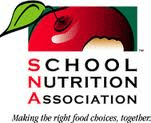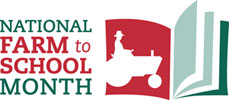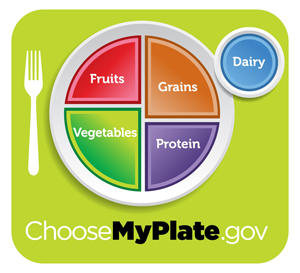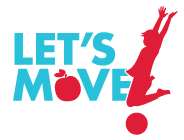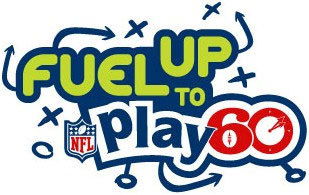animated Eagle Book Series.
Wednesday, October 31, 2012
Tricky Treats, Halloween Story from the CDC
Monday, October 29, 2012
October, National Down Syndrome Awareness Month
Joan E. Guthrie Medlen, RD and Down Syndrome Nutrition
Joan E. Guthrie Medlen, RD and Down Syndrome Nutrition
Every October, the National Down Syndrome Society (NDSS) reminds the world in a big way about the gifts that people with Down syndrome bring to their communities through a special video presentation on a jumbo screen in the heart of the Times Square.
The Times Square Video presentation kicked off Down Syndrome Awareness Month on the morning of the New York City Buddy Walk. This year, our third-party volunteers chose over 200 photos from over 1,000 submissions for the Times Square Video. The featured photographs highlight children, teens and adults with Down syndrome working, playing and learning alongside friends and family. These collective images promote acceptance and inclusion, which is the foundation of NDSS and the National Buddy Walk Program.
Joan Guthrie Medlen, M.Ed, RD and
the Down Syndrome Nutrition Handbook
Joan E. Guthrie Medlen, a mother of a child with Down syndrome, a registered dietitian, and the author of “The Down Syndrome Nutrition Handbook: A Guide to Promoting Healthy Lifestyles,” encourages parents to start teaching healthy habits early but stresses that it's never too late to start, no matter what age.Joan became involved in issues related to people with Down syndrome after the birth of her son. “As we all know, parents of kids with disabilities are involved in the big picture immediately – like it or not! I chose to work in the field of nutrition/health promotion for people with Down syndrome over 16 years ago. It’s a choice I've not regretted.”
Introducing Cooking By Color:
Recipes for Independence by
Joan E. Guthrie Medlen, RD
Meet a family who shares their
amazing story of love and living.
amazing story of love and living.
About Buddy Walk
The Buddy Walk® was established in 1995 by the National Down Syndrome Society to celebrate Down Syndrome Awareness Month in October and to promote acceptance and inclusion of people with Down syndrome. Today, the Buddy Walk program is supported nationally by NDSS and organized at the local level by parent support groups, schools and other organizations and individuals.
Labels:
ability,
Awareness,
dietitian,
Disability,
Down Syndrome,
Joan Guthrie Medlen,
Nutrition
Saturday, October 27, 2012
October is National Pretzel Month
How Pretzels are Made
Pretzels with Dips
A Look at Pretzel Commercials Over the Last 39 Years
In 1971, the use of the word "Salt", did not have the negative effects it has today -
as seen in the Mister Salty Pretzel's commercial below.
Today, the popular advertisement words are Sustainability or Renewable.
Tuesday, October 23, 2012
October is Breast Cancer Awareness Month
Health Benefits of Pink Foods
Health Benefits of Pink Foods
Health Benefits of Pink Foods
Pink Salmon is a good source of omega-3 fatty acids. In addition, pink salmon is rich in calcium, protein, magnesium and potassium; and contains iron, niacin, selenium, and vitamins A, B-12, C and E. Research shows that omega-3 fatty acids may reduce inflammation and help lower risk of chronic diseases such as heart disease, cancer, and arthritis. Omega-3 fatty acids are highly concentrated in the brain and appear to be important for cognitive (brain memory and performance) and behavioral function.
Beets are a good source of fiber, potassium and folate. Researchers believe the red pigment (called betacyanin) in beets may protect against the development of cancerous cells and might play a role in reducing the inflammation associated with heart disease.
Red Onions are a natural sources of quercetin. Quercetin is a bioflavonoid and has antioxidant and anti-inflammatory properties. Quercetin is being studied for treating conditions of high cholesterol, heart disease, circulation problems, diabetes, cataracts, peptic ulcers, inflammation, asthma, gout, chronic fatigue syndrome, preventing cancer, and for treating chronic infections of the prostate. Quercetin research is evaluating the effectiveness of increased endurance and improved athletic performance. Red onions also provide allicin, an organic sulfur compound responsible for the taste and smell of onions. Allicin may protect against inflammation, allergies, and bacteria; and may reduce the risk factors of certain types of cancers.
Guavas are rich in dietary fiber, vitamins A and C, folic acid, potassium, and manganese. A guava contains about 4 times the amount of vitamin C as an orange. Vitamin C is an antioxidant, which helps, protects cells from free radical damage. Currently there is insufficient evidence to rate the effectiveness of guava in the treatment of colic, diarrhea, diabetes, cough, cataracts, high cholesterol, heart disease, cancer, and other conditions. More research is needed to evaluate the usefulness of guava for these conditions.
Yogurt, Raspberry, Low Fat or Fat-Free Yogurt has been associated with a wide range of health benefits, due to its bacterial cultures and the many nutrients it contains. Yogurt is an excellent source of protein, calcium and potassium. Some research shows that yogurt with probiotic cultures may help improve the immune system; reduce yeast infections in women; help with digestion; and reduce colon and other cancer risks. Calcium has beneficial effects on bone mass and may help prevent osteoporosis. Many people who are lactose intolerant can enjoy yogurt. One serving of yogurt is one eight-ounce cup or serving.
National Breast Cancer Awareness Month
NBCAM Organizations Working Together
References. http://www.nbcam.org/
American Cancer Society (ACS) www.cancer.org
American College of Obstetricians and Gynecologists www.acog.org
American College of Radiology (ACR) www.acr.org
The American Society of Clinical Oncology (ASCO) www.asco.org
The American Medical Women's Association (AMWA) www.amwa-doc.org
AstraZeneca HealthCare Foundation, www.astrazeneca-us.com/foundation
CancerCare www.cancercare.org
Men Against Breast Cancer (MABC) www.menagainstbreastcancer.org
National Medical Association (NMA), www.nmanet.org
The Oncology Nursing Society (ONS) www.ons.org
Prevent Cancer Foundation www.preventcancer.org
Susan G. Komen for the Cure® www.komen.org
Centers for Medicare & Medicaid Services (CMS) www.cms.gov
National Cancer Institute (NCI), www.cancer.gov
NBCAM Organizations Working Together
References. http://www.nbcam.org/
American Cancer Society (ACS) www.cancer.org
American College of Obstetricians and Gynecologists www.acog.org
American College of Radiology (ACR) www.acr.org
The American Society of Clinical Oncology (ASCO) www.asco.org
The American Medical Women's Association (AMWA) www.amwa-doc.org
AstraZeneca HealthCare Foundation, www.astrazeneca-us.com/foundation
CancerCare www.cancercare.org
Men Against Breast Cancer (MABC) www.menagainstbreastcancer.org
National Medical Association (NMA), www.nmanet.org
The Oncology Nursing Society (ONS) www.ons.org
Prevent Cancer Foundation www.preventcancer.org
Susan G. Komen for the Cure® www.komen.org
Centers for Medicare & Medicaid Services (CMS) www.cms.gov
National Cancer Institute (NCI), www.cancer.gov
Labels:
beets,
Breast cancer,
dietitian,
foods,
guava,
nutritionist,
Pink,
pink grapefruit,
raspberry,
red onions,
salmon,
yogurt
Monday, October 22, 2012
October 22, National Nut Day
Health Benefits of Nuts
Answers Below
Nutrition Analysis is based on 1/4 cup, unsalted Source USDA Nutrient Database.
Almonds (#8)
Calories (kcal) 132
Protein (g) 5
Carbohydrates (g) 5
Dietary Fiber (g) 2.8
Fat (g) 11.4
Saturated Fat (g) 0.9
Mono Fat (g) 7
Poly Fat (g) 2.8
Cholesterol (mg) 0
Omega 6 Fatty Acid (g) 2.8
Protein (g) 5
Carbohydrates (g) 5
Dietary Fiber (g) 2.8
Fat (g) 11.4
Saturated Fat (g) 0.9
Mono Fat (g) 7
Poly Fat (g) 2.8
Cholesterol (mg) 0
Omega 6 Fatty Acid (g) 2.8
Cashews (#2)
Calories (kcal) 187
Protein (g) 5.4
Carbohydrates (g) 9.6
Dietary Fiber (g) 1.1
Fat (g) 15.4
Saturated Fat (g) 2.7
Mono Fat (g) 8.4
Poly Fat (g) 2.8
Cholesterol (mg) 0
Omega 6 Fatty Acid (g) 2.7
Protein (g) 5.4
Carbohydrates (g) 9.6
Dietary Fiber (g) 1.1
Fat (g) 15.4
Saturated Fat (g) 2.7
Mono Fat (g) 8.4
Poly Fat (g) 2.8
Cholesterol (mg) 0
Omega 6 Fatty Acid (g) 2.7
Macadamia. (#7) Hawaii Macadamia Nut Association (HMNA)
Calories (kcal) 237
Protein (g) 2.6
Carbohydrates (g) 4.4
Dietary Fiber (g) 2.6
Fat (g) 25
Saturated Fat (g) 3.9
Mono Fat (g) 19.6
Poly Fat (g) 0.5
Cholesterol (mg) 0
Omega 6 Fatty Acid (g) 0.4
Protein (g) 2.6
Carbohydrates (g) 4.4
Dietary Fiber (g) 2.6
Fat (g) 25
Saturated Fat (g) 3.9
Mono Fat (g) 19.6
Poly Fat (g) 0.5
Cholesterol (mg) 0
Omega 6 Fatty Acid (g) 0.4
Peanuts (#1)
Fat (g) 18.1
Saturated Fat (g) 2.5
Mono Fat (g) 9.0
Poly Fat (g) 5.7
Cholesterol (mg) 0
Omega 6 Fatty Acid (g) 5.7
Saturated Fat (g) 2.5
Mono Fat (g) 9.0
Poly Fat (g) 5.7
Cholesterol (mg) 0
Omega 6 Fatty Acid (g) 5.7
Pecans (#6)
Calories (kcal) 171
Protein (g) 2.3
Carbohydrates (g) 3.4
Dietary Fiber (g) 2.4
Fat (g) 17.8
Saturated Fat (g) 1.5
Mono Fat (g) 10.1
Poly Fat (g) 5.3
Cholesterol (mg) 0
Omega 6 Fatty Acid (g) 5.1
Protein (g) 2.3
Carbohydrates (g) 3.4
Dietary Fiber (g) 2.4
Fat (g) 17.8
Saturated Fat (g) 1.5
Mono Fat (g) 10.1
Poly Fat (g) 5.3
Cholesterol (mg) 0
Omega 6 Fatty Acid (g) 5.1
Protein (g) 4.6
Carbohydrates (g) 4.4
Dietary Fiber (g) 1.2
Fat (g) 23.1
Saturated Fat (g) 1.7
Mono Fat (g) 6.3
Poly Fat (g) 11.5
Cholesterol (mg) 0
Omega 6 Fatty Acid (g) 11.2
Protein (g) 6.6
Carbohydrates (g) 8.5
Dietary Fiber (g) 3.2
Fat (g) 14
Saturated Fat (g) 1.7
Mono Fat (g) 7.4
Poly Fat (g) 4.3
Cholesterol (mg) 0
Omega 6 Fatty Acid (g) 4.2
Walnuts (#3)
Calories (kcal) 163.5
Protein (g) 3.8
Carbohydrates (g) 3.4
Dietary Fiber (g) 1.7
Fat (g) 16.3
Saturated Fat (g) 1.5
Mono Fat (g) 2.2
Poly Fat (g) 11.8
Cholesterol (mg) 0
Omega 6 Fatty Acid (g) 9.5
Protein (g) 3.8
Carbohydrates (g) 3.4
Dietary Fiber (g) 1.7
Fat (g) 16.3
Saturated Fat (g) 1.5
Mono Fat (g) 2.2
Poly Fat (g) 11.8
Cholesterol (mg) 0
Omega 6 Fatty Acid (g) 9.5
How Nuts are Prepared
Recipes and Marketing Nuts - Now and Then
Planters Commercial
Oregon Hazelnut
Sharon Palmer, RD - Steel Cut Oats Risotto with Walnuts
Labels:
almonds,
cashews,
dietitians,
Macadamia,
Nut day,
Nutrition,
Peanuts,
Pecans,
Pine nuts,
Pistachios,
RD,
Sharon Palmer,
Toby Smithson,
Walnuts
Saturday, October 20, 2012
World Osteoporosis Day
October 20, 2012
October 20, 2012
The National Osteoporosis Foundation (NOF) is the leading consumer and community-focused health organization dedicated to the prevention of osteoporosis and broken bones, the promotion of strong bones for life and the reduction of human suffering through programs of public and clinician awareness, education, advocacy and research. Established in 1984, NOF is the nation's leading voluntary health organization solely dedicated to osteoporosis and bone health. World Osteoporosis Day 2012 will focus on "Stop at One: Make Your First Break Your Last."
World Osteoporosis Day 2012 North America Media Launch
Osteoporosis is a major public health threat for an estimated 44 million Americans. Of the 10 million American’s estimated to already have osteoporosis, eight million are women and two million are men.
What can you do to protect your bones?
Osteoporosis and the broken bones it can cause are not part of normal aging. Osteoporosis prevention should begin in childhood and continue throughout life.
1. Get enough calcium and vitamin D and eat a well balanced diet.
2. Engage in regular exercise.
3. Eat foods that are good for bone health, such as fruits and vegetables.
4. Avoid smoking and limit alcohol to 2-3 drinks per day.
What Women Need to Know
Are You at Risk for Developing Osteoporosis?What can you do to protect your bones?
Osteoporosis and the broken bones it can cause are not part of normal aging. Osteoporosis prevention should begin in childhood and continue throughout life.
1. Get enough calcium and vitamin D and eat a well balanced diet.
2. Engage in regular exercise.
3. Eat foods that are good for bone health, such as fruits and vegetables.
4. Avoid smoking and limit alcohol to 2-3 drinks per day.
What Women Need to Know
Females are at a higher risk of developing osteoporosis and broken bones.
• Of the estimated 10 million Americans with osteoporosis, about eight million or 80% are women.
• Approximately one in two women over age 50 will break a bone because of osteoporosis.
• A woman's risk of breaking a hip is equal to her combined risk of breast, uterine and ovarian cancer.
There are multiple reasons why women are more like to get osteoporosis than men, including:
• Women tend to have smaller, thinner bones than men.
• Estrogen, a hormone in women decreases sharply when women reach menopause, which can cause bone loss. This is why the chance of developing osteoporosis increases as women reach menopause.
Uncontrollable Risk Factors
• Being over age 50.
• Being Female.
• Menopause.
• Family History.
• Low Body Weight/Being Small and Thin.
• Broken Bones or Height Loss.
Controllable Risk Factors
• Not Getting Enough Calcium and Vitamin D.
• Not Eating Enough Fruits and Vegetables.
• Getting Too Much Protein, Sodium and Caffeine.
• Having an Inactive Lifestyle.
• Smoking.
• Drinking too much alcohol.
• Losing Weight.
There are also medications and diseases that can cause bone loss and increase your risk of osteoporosis.
Calcium and Vitamin D
Getting enough calcium and vitamin D are essential to building stronger, denser bones early in life and to keeping bones strong and healthy later in life. Calcium and vitamin D are the two most important nutrients for bone health.
Calcium-Rich Food Sources
Dairy products, such as low-fat and non-fat milk, yogurt and cheese are high in calcium. Certain green vegetables and other foods contain calcium in smaller amounts. Some juices, breakfast foods, soymilk, cereals, snacks, and breads have calcium that has been added.
Vitamin D Sources
There are three ways to get vitamin D: • Sunlight
• Food
• Supplements
Three Steps to Unbreakable Bones
You’re never too young or too old to improve the health of your bones. Osteoporosis prevention should begin in childhood. But it shouldn't stop there. Whatever your age, the habits you adopt now can affect your bone health for the rest of your life. Now is the time to take action.Resources and References. To learn more about Osteoporosis, please visit the following Foundations.
International Osteoporosis Foundation
National Osteoporosis Foundation 1150 17th Street, NW Suite 850 Washington, DC 20036 • 1.800.231.4222
Friday, October 19, 2012
October 19, National Mammography Day
October is Breast Cancer Awareness Month. October 19, National Mammography Day. Remind a friend to have a Mammogram. Pass it Along.
A mammogram is an x-ray of the breast used to look for early signs of breast cancer. Regular mammograms are the best tests doctors have to find breast cancer early. When breast cancer is found early, many women go on to live long and healthy lives.
Women should have mammograms every two years from age 50 to 74 years; and more often if breast cancer runs in the family or you have any symptoms or changes in your breast.
To find out where you can get a mammogram, the CDC has provided the following resources.
· If you have a regular doctor, talk to him or her.
· Call the National Cancer Institute's Cancer Information Service (CIS) at 1-800-4-CANCER (1-800-422-6237). For TTY: 1-800-332-8615.
(CIS) at 1-800-4-CANCER (1-800-422-6237). For TTY: 1-800-332-8615.
· For Medicare information, you can call 1-800 MEDICARE (1-800-633-4227) or visit The Centers for Medicare and Medicaid Services.
· The Centers for Disease Control and Prevention (CDC) has a program called the National Breast and Cervical Cancer Early Detection Program,which works with health departments and other groups to provide low-cost or free mammograms to women who qualify. Find out if you qualify.
Information obtained from the
Centers for Disease Control and Prevention
Women should have mammograms every two years from age 50 to 74 years; and more often if breast cancer runs in the family or you have any symptoms or changes in your breast.
To find out where you can get a mammogram, the CDC has provided the following resources.
· If you have a regular doctor, talk to him or her.
· Call the National Cancer Institute's Cancer Information Service
 (CIS) at 1-800-4-CANCER (1-800-422-6237). For TTY: 1-800-332-8615.
(CIS) at 1-800-4-CANCER (1-800-422-6237). For TTY: 1-800-332-8615. · For Medicare information, you can call 1-800 MEDICARE (1-800-633-4227) or visit The Centers for Medicare and Medicaid Services.

· The Centers for Disease Control and Prevention (CDC) has a program called the National Breast and Cervical Cancer Early Detection Program,which works with health departments and other groups to provide low-cost or free mammograms to women who qualify. Find out if you qualify.
Wednesday, October 17, 2012
National School Lunch Week
October 15–19, 2012
October 15–19, 2012
"In the long view, no nation is
healthier than its children, or more prosperous than its farmers." - President Harry Truman, on signing the 1946 National School Lunch Act.
Through the Years
The National School Lunch Program was created in 1946 when President Truman signed the National School Lunch Act into law. The National School Lunch Program is a federal nutrition assistance program. Through the years, the program has expanded to include the School Breakfast Program, Snack Program, Child and Adult Care Feeding Program and the Summer Food Service Program. In 1962, Congress designated the week beginning on the second Sunday in October each year as "National School Lunch Week."
The video below looks at the school lunch program from the late 1930’s to the present day and includes President Obama signing the Healthy, Hunger-Free Kids Act. One can see from the photographs some of the changes in the foods provided. There is an increase in whole grains, fruits, vegetables, lean protein and lowfat dairy. (Part of the video has clips from a film produced by the USDA in the mid-60s.)
When I think of the School Nutrition program my first thoughts turn to Dayle Hayes, MS, RD and Darlene Moppert, MS, RD. These registered dietitians and nutrition experts are advocates for our children. In addition, they take the time to teach, educate, and enlighten the school staff, parents, family, media and legislators. Recently, Dayle initiated a “Give Thanks ... for the School Nutrition Heroes who make “SCHOOL MEALS THAT ROCK.” Acknowledging the hard working people who help feed our children is a positive step in recognizing what is right about our school meals. School Meals that Rock is a place to share and celebrate what is right with school nutrition in America. It is a counter-revolution to the media bashing of school meals and a tribute to every lunch lady (and gentleman) working to do amazing things for kids' nutrition. I encourage you to visit School Meals That Rock and see what progress is being made in our schools. Darlene Moppert, MS, RD took a giant step to offer students the ability to purchase vegan menu items in the National School Lunch Program. Each year Darlene, the Broward County Public Schools and the Broward County Dietetic Association sponsors a National Nutrition Month Poster Contest. The event helps educate children, families and the community. Recently, Darlene Moppert participated in a Broward School workshops to help teachers with disabled students. Darlene Moppert, RD, Program Manager, Nutrition Education and Training, Food and Nutrition Services, Chairperson, Nutrition Committee is involved with families and community organizations. She addresses food and nutrition issues, recommends nutrition policy and programs, and ensures school meals are culturally diverse and meet special dietary needs. Learn more at the Broward County Public Schools Food and Nutrition Services.
School Lunch Resources
Priceless: School Lunch
"Priceless" launched the campaign depicting the cafeteria tray as the conduit for a reformed school food system that supports healthy children, local farms, and smart schools. The video was created by three IATP Food and Society Fellows, Shalini Kantayya, Nicole Betancourt, and Debra Eschmeyer to raise awareness for the Child Nutrition Act.
Tom Vilsack, Secretary of Agriculture stated “National School Lunch Week reminds us how important it is that our children be healthy and active, that they not go hungry, and that they have access to nutritious meals."
| ||||||||||||||||||||||||||||||
Labels:
children,
Darlene Moppert,
Dayle Hayes,
dietitian,
Food,
lunch,
National School Lunch,
Nutrition,
nutritionist,
obesity
Subscribe to:
Comments (Atom)
































